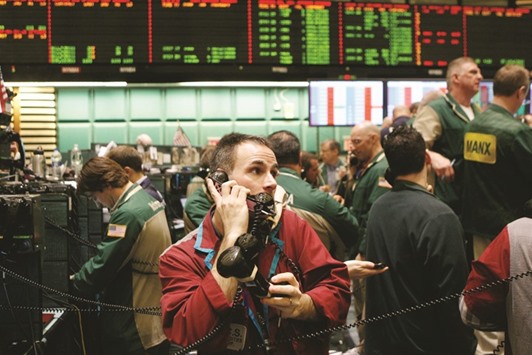Oil prices rose on Friday, rebounding more than 25% from 12-year lows hit last week and cutting losses for the month, on prospects of a deal between major exporters to cut production and curb one of the biggest supply gluts in history.
Oil also drew support from weak US GDP data that raised hopes the Federal Reserve may slow any planned interest rate hikes.
The oil market rallied for four straight sessions this week after the Organisation of the Petroleum Exporting Countries renewed calls for rival producers to cut supply alongside its members that triggered a volley of comments from Russia on a deal with Opec, something it had been refusing to do for 15 years.
Brent March futures, which expired on Friday, closed at $34.74 a barrel, 85 cents or 2.5% higher. On January 20, it hit $27.10, its lowest since November 2003.
US crude settled up 40 cents or 1.2%, at$33.62 per barrel, having hit a high of $34.40 in the session. For the week, Brent was 7.9% higher and US crude 4.4% higher, paring their monthly losses to 6.8% and 9.3% respectively.
Trading was volatile, with both contracts briefly turning negative after the Wall Street Journal cited an Iranian oil official as saying the country would not join an immediate Opec production cut. The paper said Iran wants to boost crude exports by 1.5mn barrels per day.
Russian Deputy Prime Minister Arkady Dvorkovich said on Friday the country would not intervene to balance the market. His comments fed growing doubts about a possible deal mentioned by Energy Minister Alexander Novak the previous day. But a few hours later, Russia’s foreign ministry said veteran minister Sergei Lavrov, who almost never comments on oil policies, would visit the UAE and Oman to discuss oil markets.
“The market has rewarded these statements about the possibility of a deal, even though I think it’s ridiculous,” said John Kilduff, partner at Again Capital LLC in New York. He noted that Iran and Iraq were determined to boost production, and were unlikely to come together with Saudi Arabia to cut Opec output. The Saudis have made no official statement on a deal.
“This is a rally on false hopes, unfortunately.”
Other analysts said oil prices may have found a bottom and could rally as high as $45 by year-end as non-Opec supply is reduced and global demand improves.
US oil production fell in November for the second straight month, the Energy Information Administration said.
US shale producers, who have helped add to the glut, have slashed 2016 capital spending plans more than expected, with one saying prices would need to rise more than 20% to turn a profit.
Meanwhile the US oil drilling rig count fell for the sixth straight week with more cuts seen, oil services company Baker Hughes Inc said.
“With more energy companies announcing cuts and Opec contemplating a cut, it looks like oil is forming a bottom,” said Phil Flynn, an analyst at Price Futures Group in Chicago. “Now the question becomes how high can they go. The charts look like a test near $40 is on the cards.”

A trader works in the crude oil options pit on the floor of the New York Mercantile Exchange. For the week ended on Friday, Brent was 7.9% higher and US crude 4.4% higher, paring their monthly losses to 6.8% and 9.3% respectively.


